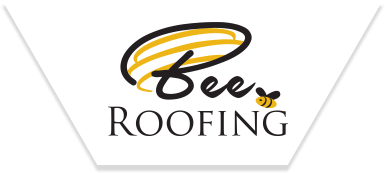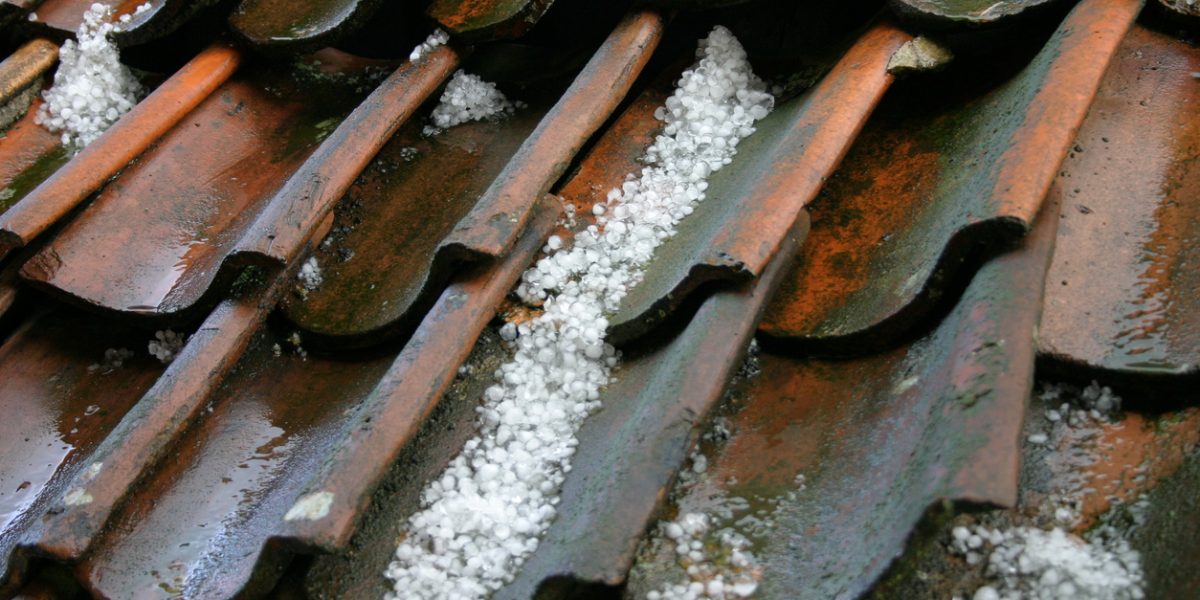Roofs are essential for building structures, protecting from weather elements such as extreme heat or cold, wind, rain, snow, and hail. They act as structural supports for buildings and provide shelter from the elements. Hail damage is a common problem during storms. A hailstorm can cause severe damage to your roof and even threaten your home’s structural integrity. When hailstorms strike, large pieces of ice or chunks of frozen rain pelting from the sky can wreak havoc on roofs and shingles.
These pieces of ice bounce off roofs and windows before falling onto the ground. When they hit something solid, they create holes or dents in their path. This occurrence can easily cause damage to flat surfaces such as wood shingles, metal roof panels, and asphalt.
Most homeowners don’t know much about hail damage or the signs they should seek. Here are some telltale signs;
Water Damage
Hail can cause damage to your roof by sending water through tiny cracks that are not easily noticeable. Roof leaks often happen because of poor maintenance. Over time, they weaken your roofs and walls, allowing them to crack and break easily. Once cracks appear, water spreads inside, damaging the interior. Fortunately, these leaks are easily preventable.
If you notice any water coming into your home from the eaves (the area above your house), then hail may have damaged your roof. Make sure to call your local building contractor to determine if they can repair these types of damages before the damage becomes too expensive to fix.
Cracking on the Roofs
Hail can cause large cracks in roof shingles and tiles after exposure to the elements. These cracks usually start at the corners of your roof, depending on the material. They occur from the expansion of water inside the roofing material. This expansion causes the roof to become weaker, making it prone to further deterioration. You should regularly check for this problem because a small crack may become significant over time.
Mold Growth
Did you know that mold growth often occurs after hailstorms? It can happen even if you have had proper building maintenance and waterproofing. Mold growth occurs when moisture collects under roofs or other areas where water can collect. Airborne spores and rainwater commonly cause mold on wooden shingles.
When mold grows on your roof’s surface, it can destroy the integrity of your roof structure. This type of weather damage is common and could contaminate your home. Mold growth can cause severe problems for anyone living underneath a roof. If you notice mold growing on your roof, you need to contact a professional immediately.
Holes in the Shingle
This sign indicates that your shingles might need replacing due to hail damage. Shingle layers often get torn away from a roof when hit by heavy wind-driven rain. Once this happens, the shingles begin to deteriorate and eventually fall apart. If hail damages your roof, you first need to assess the situation. Sometimes, you may have to replace your entire roof. You should contact your insurance provider to get proof of loss.
Once your insurer approves the claim, it’s time to repair the damage. First, assess the condition of your roof. Look closely at any holes or other defects that you notice. Next, check the integrity of the roof deck. If you hear creaking or cracking sounds, it might mean that the roof deck is beginning to deteriorate. In such a case, you must remove the old roof before replacing it. Sometimes, you may want to completely tear off the existing roof and install a new one. After a roof specialist repairs it, you must seal the area around the repair with a waterproof membrane.
Rotting Wood
Hail damage is not only damaging to your roofing system but can cause rot to occur inside your home if you don’t take proper precautions. Hail destroys the integrity of wood siding, shingles, clapboard siding, asphalt shingles, and plywood sheathing. It can also destroy any exterior surface that isn’t adequately protected. Call a professional to repair the damage when you notice signs of rot, especially around windows and doors.
Types of Hail Damage
Hail damage occurs when ice crystals form from freezing rain or snow and fall at high speeds onto the surface of a building or vehicle. It can cause roofing systems to fail. Two types of hail damage may occur –surface damage or core damage.
In a surface impact, the hailstones hit your roof and are left behind. Core impacts, however, involve the hailstones penetrating deep into your roof, causing structural failure. This damage can cause the entire roof to come down and, in some cases, collapse.
Taking Action to Protect Your Roof
Roofs offer excellent protection against rain or snowfall, but they may not always withstand hail. Hail damage can cause costly repairs to your roofing systems. If hail has damaged your roof’s surface, it could have compromised the membrane.
In many cases, if hail damage occurs, you may not even know until the next storm comes through. This occurrence means the repair costs are often much higher than they should be. However, it is always best to take action before further damage occurs. Here are some tips to help:
- Have an inspection done to determine the extent of hail damage and ensure proper professional repairs
- Keep an eye out for new leaks or cracks around where the hail damage was. Once you find these, contact a professional immediately
- Ensure your roof is well maintained. In addition to regular maintenance, ensure a roof repair specialist trims back and evenly spaces the shingles
Let Us Help Minimize Damage to Your Roof
It can be difficult to identify signs of hail damage without professional assistance. Fortunately, the roof specialists at Bee Roofing can inspect your roof, even if the storm has already passed. You can take steps to minimize long-term repair costs by identifying signs of hail damage. Contact us at (803) 232-7536 or schedule an appointment for a roof inspection for your home in York, South Carolina.


